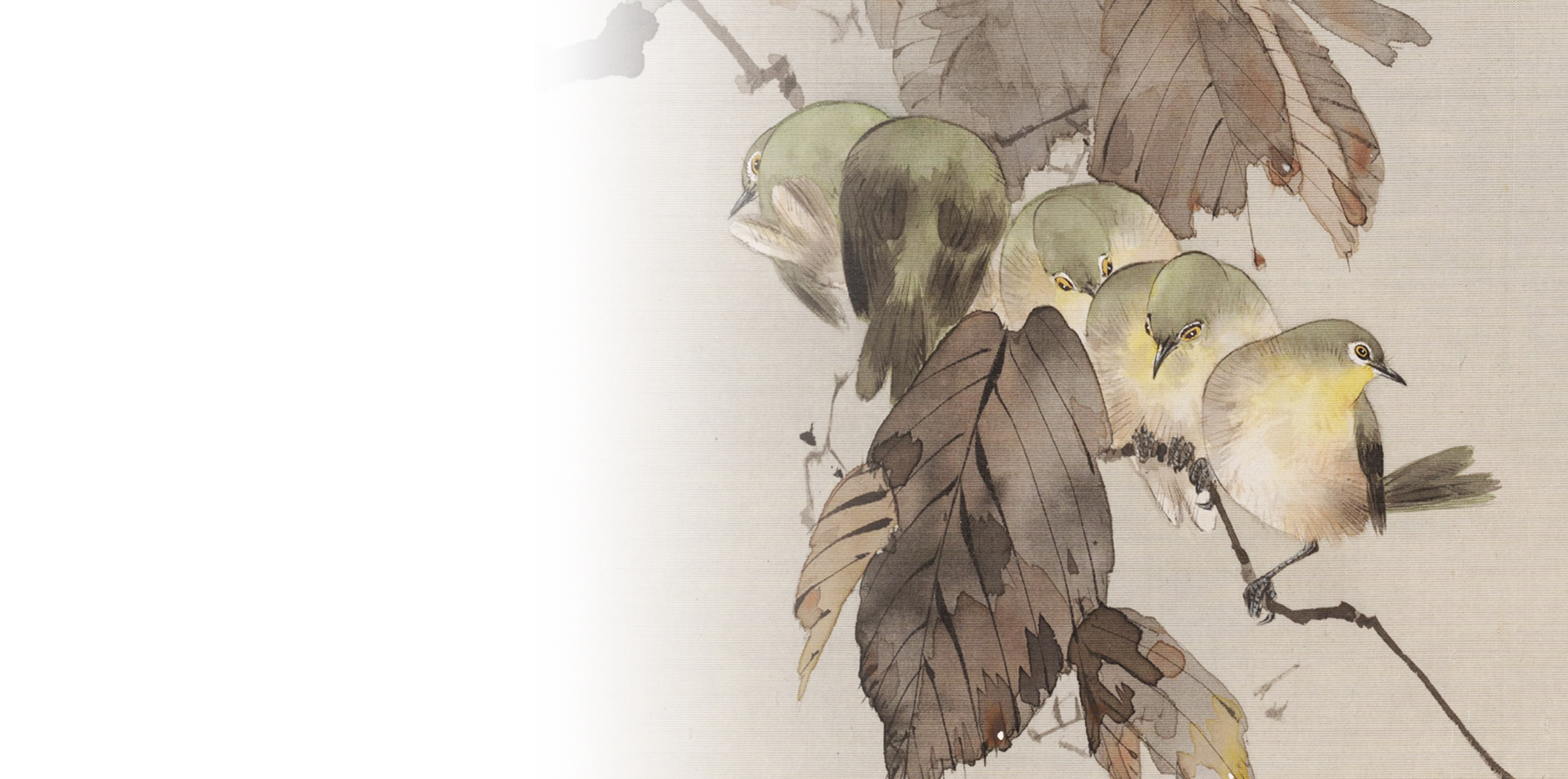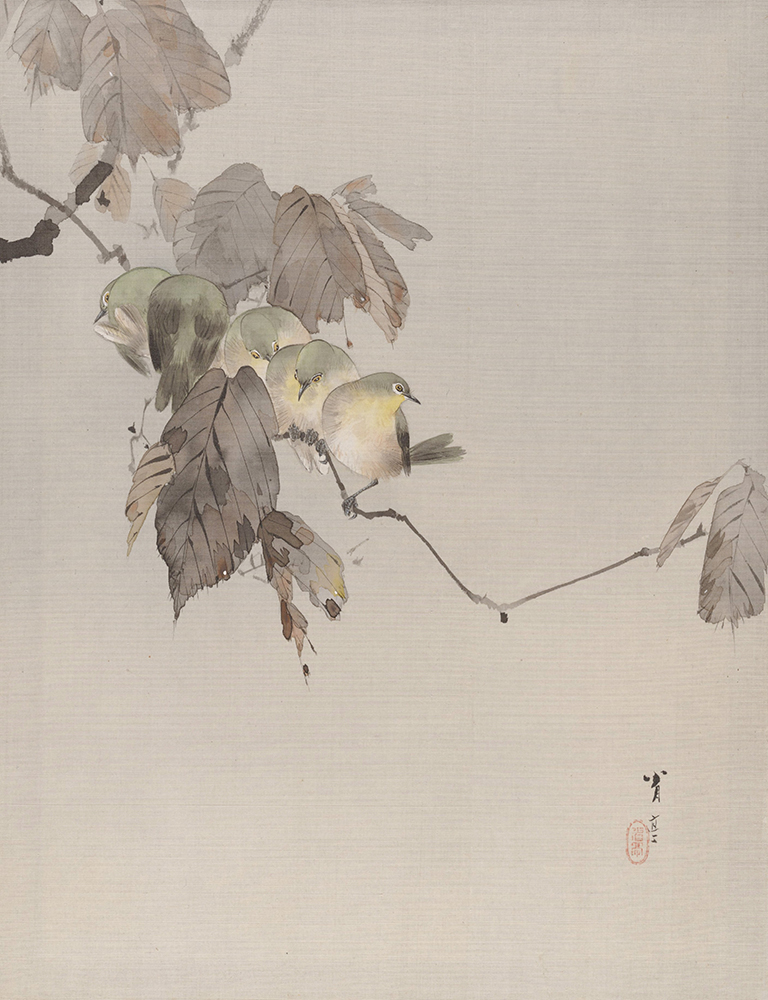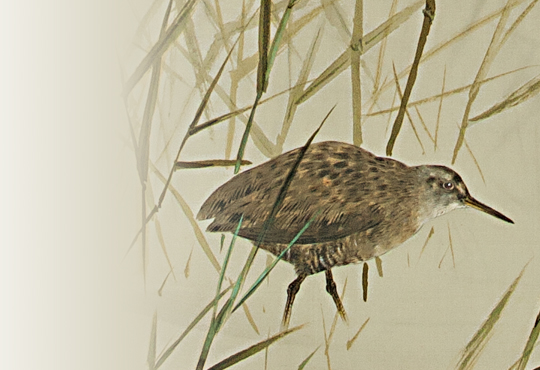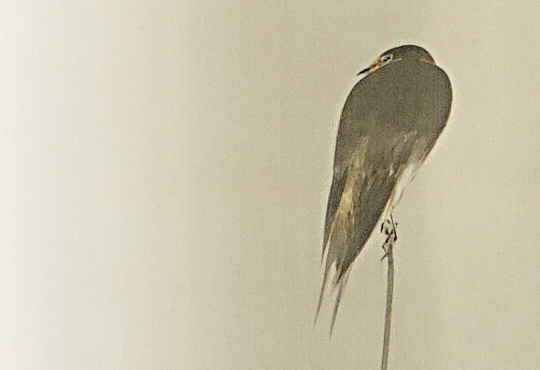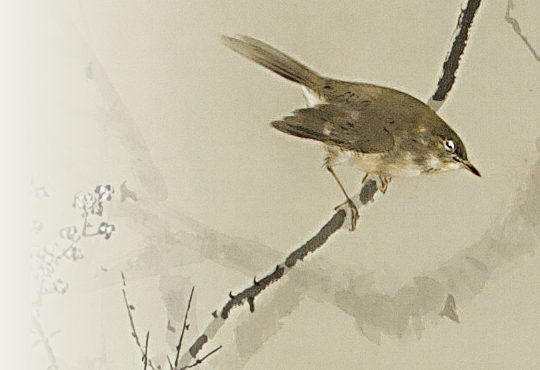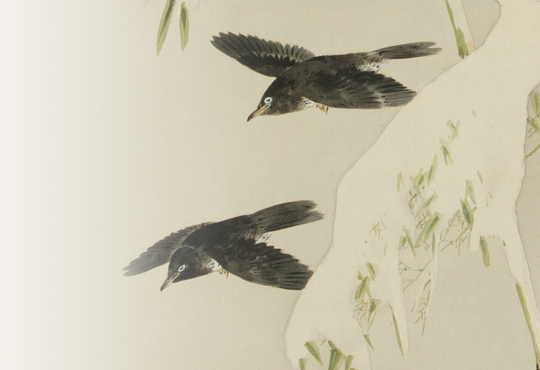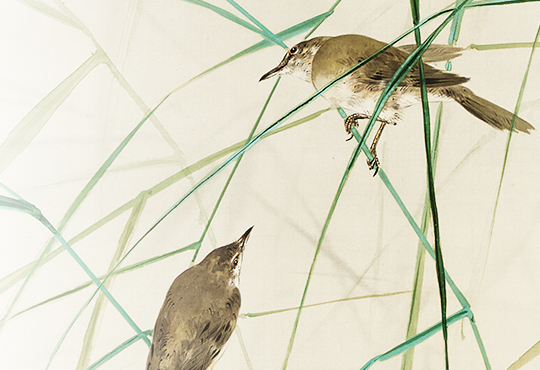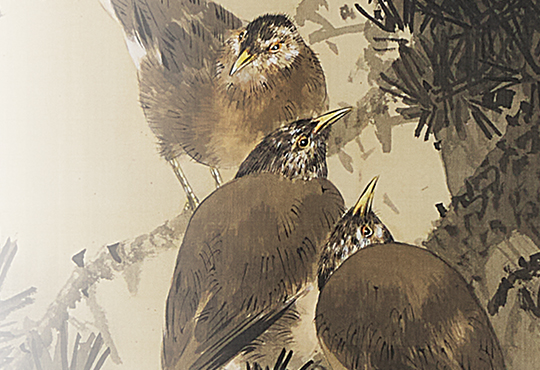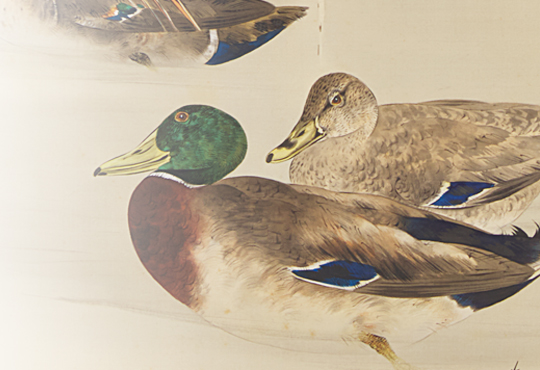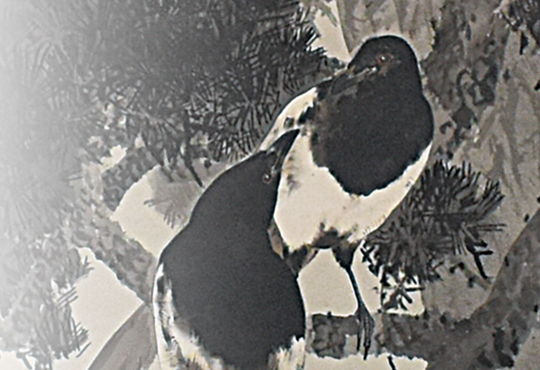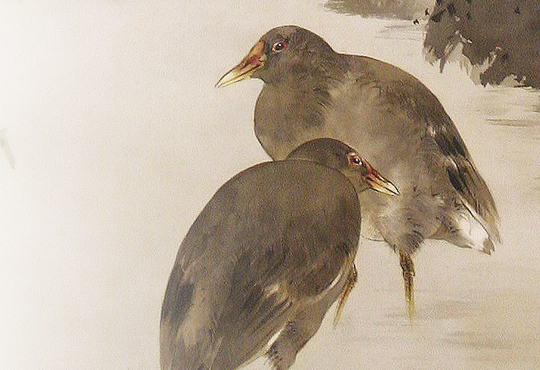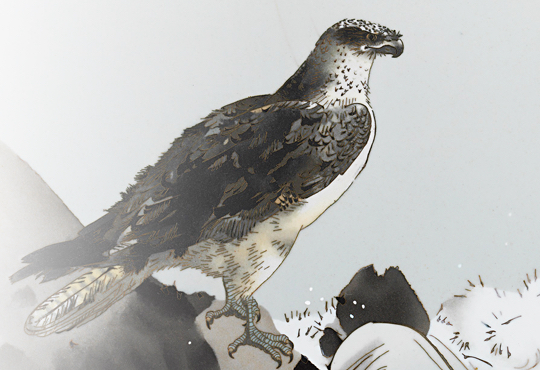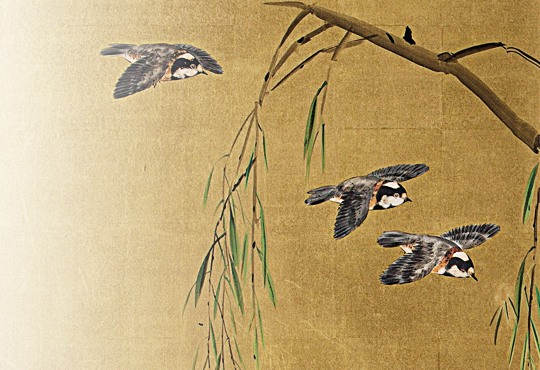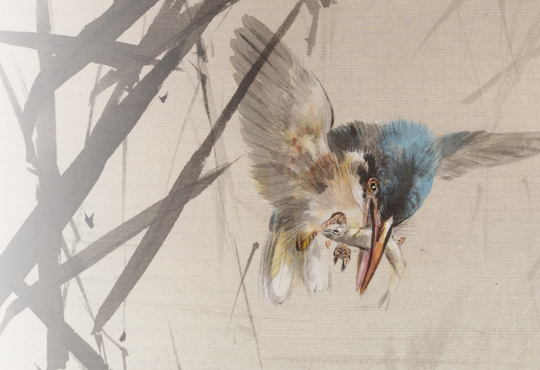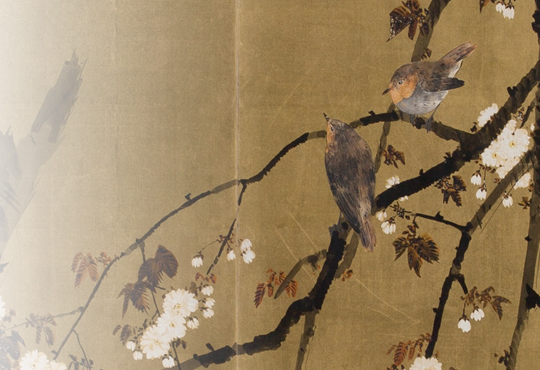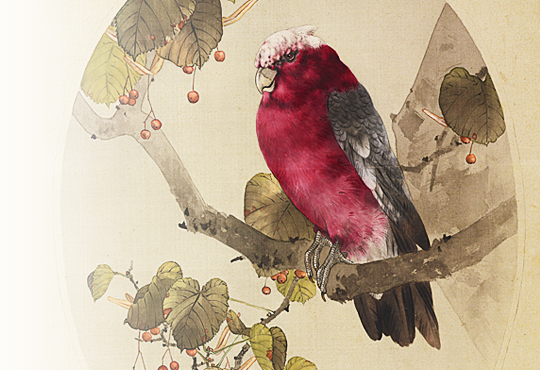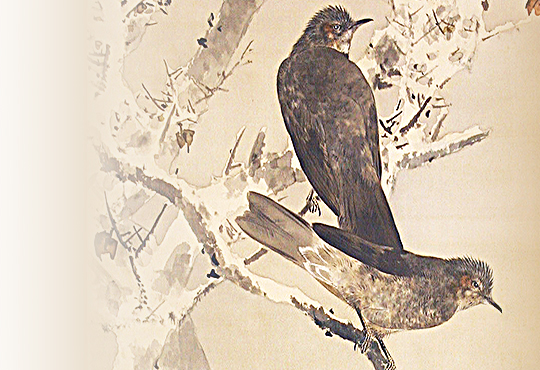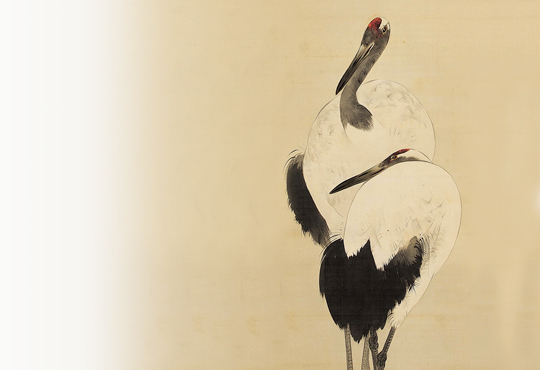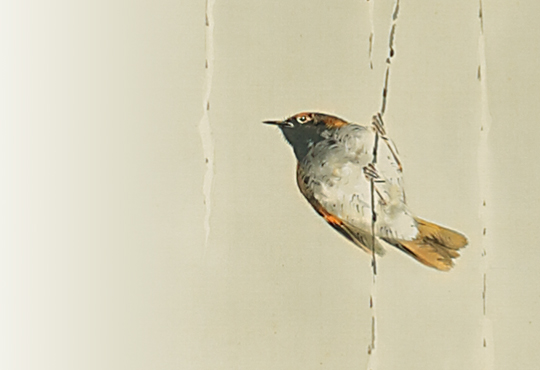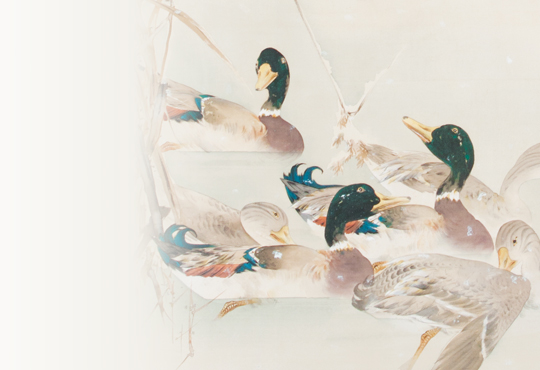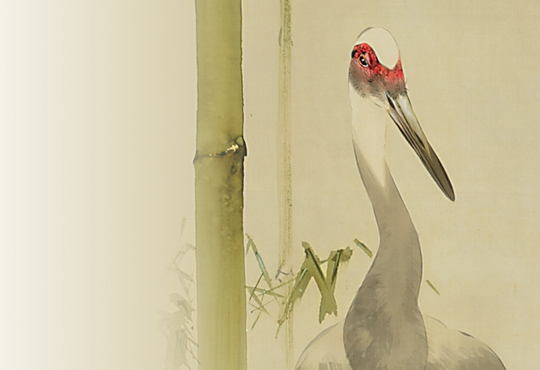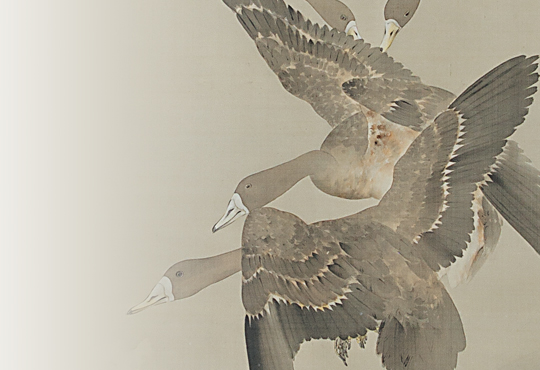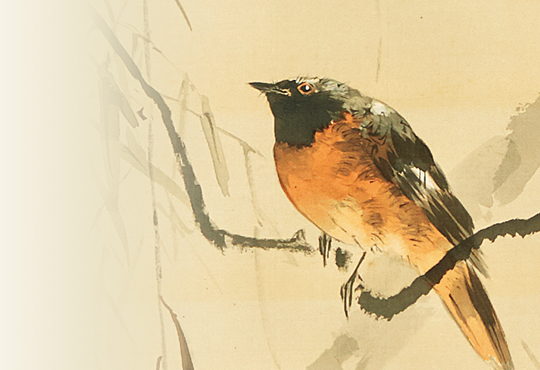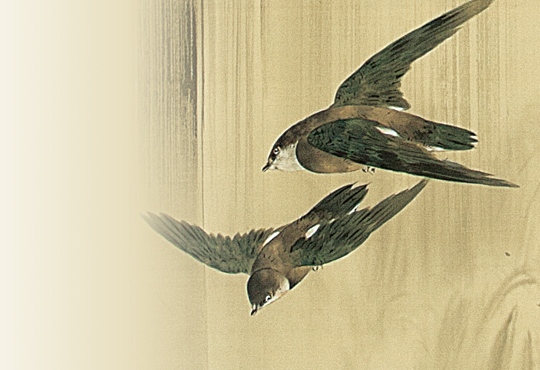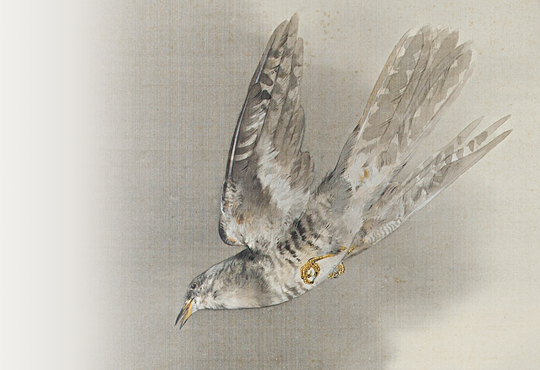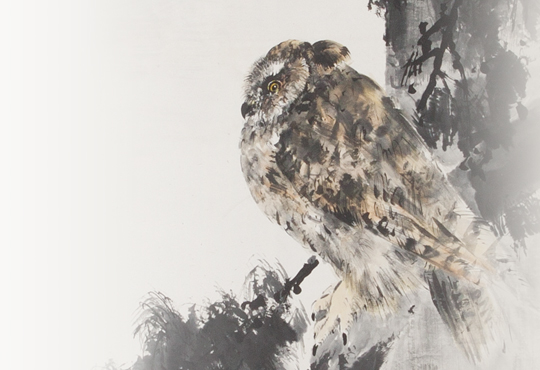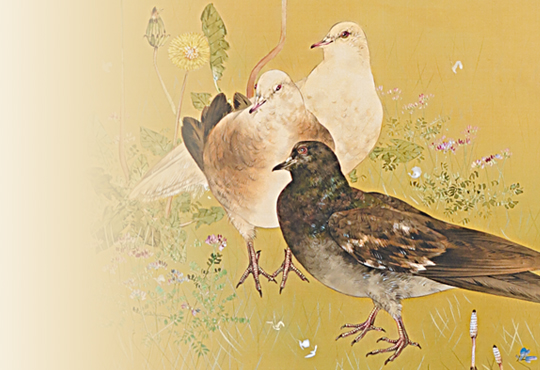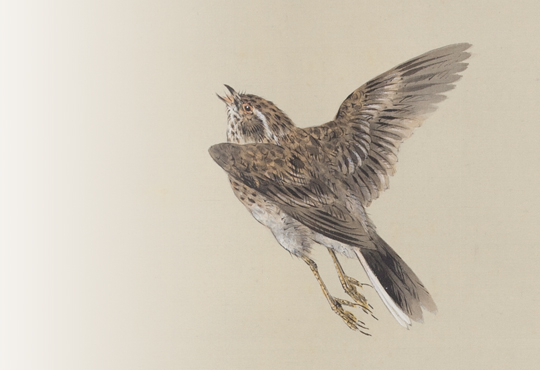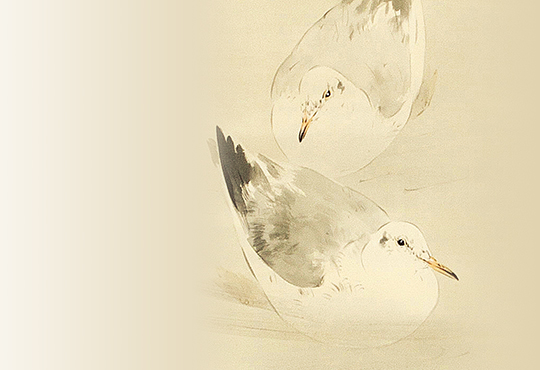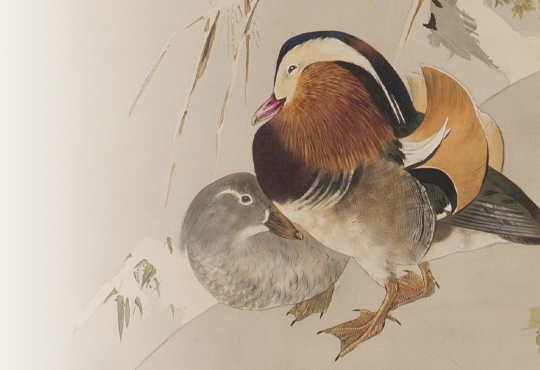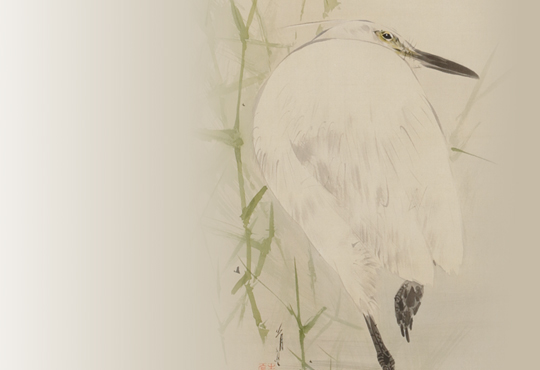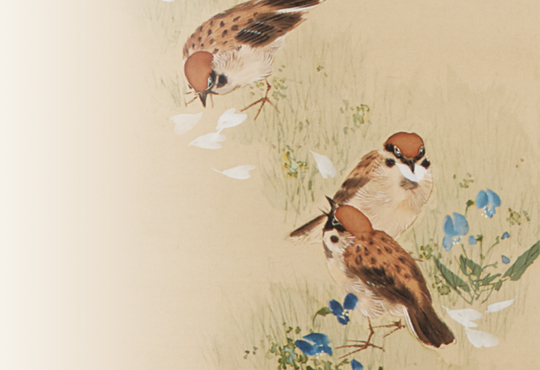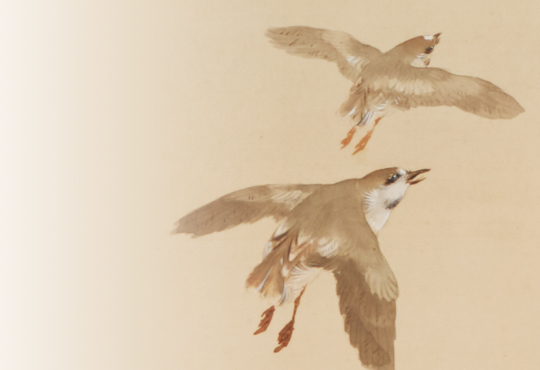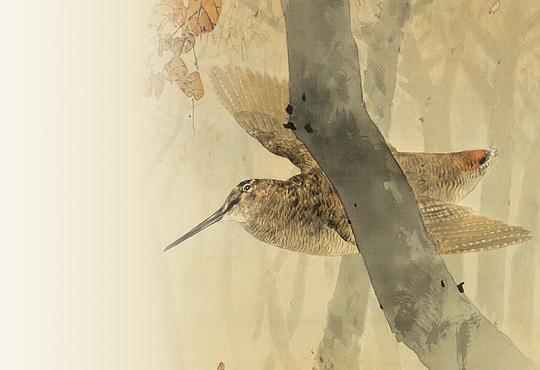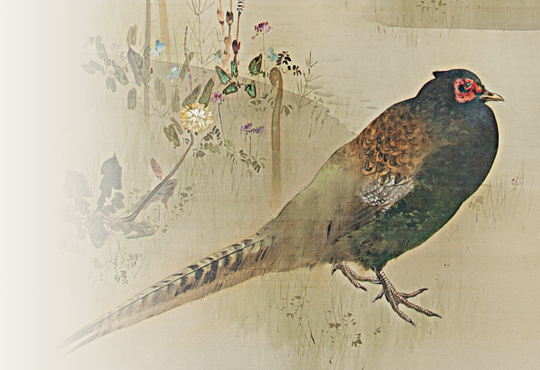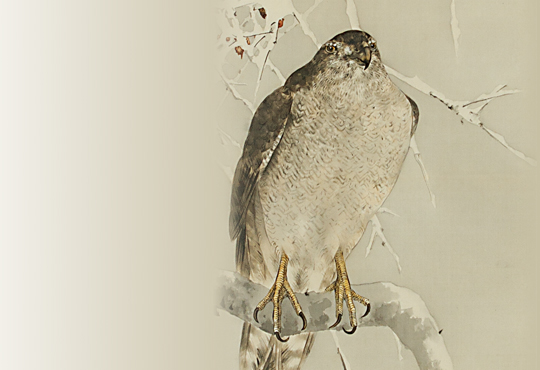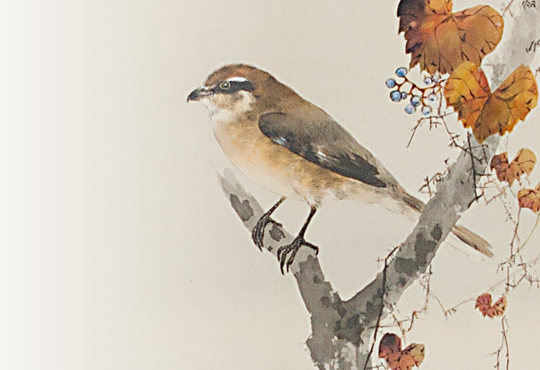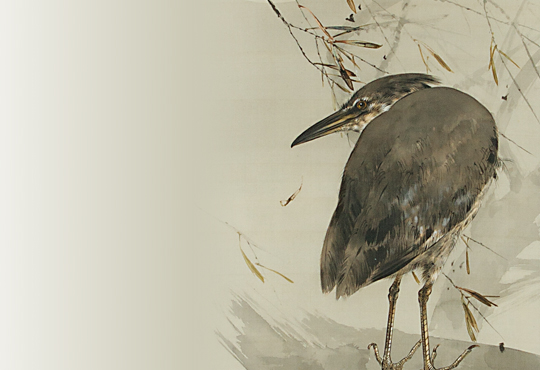vol.29 The 6th Apparition: Birds on a Branch
As spring enters and plum and cherry blossoms enter full bloom, Mejiro, Japanese White-eyes, arrive. Chirping “chi-chi-chi-chi”, they flutter around trees and branches and reach into flowers to drink nectar with their brush-shaped tongues. Whether in the north or in the south, in the city or the country, they can be seen all over Japan. Common throughout the nation, these sweet-toothed birds are lovers of nectar.
Japanese White-eyes (body length 12cm) inhabit areas in Japan, southern China, and Indochina. Highly common, they can be found all over Japan from Hokkaido to the Ryukyu and Bonin Islands, and their yellow-green body and white eyes are often seen alongside blooming cherry blossoms. However, I would like to highlight that, while they are named “White-eyes”, the only thing white is the ring-shaped feathers that surround their eyes, not their eyes. Even more, the majority of about 100 White-eye species are white around the eyes. They live in pairs during the breeding season but live in flocks at other times. Occasionally, resting flock members perch close and form a close-knit row on a side branch. Termed “Mejiro oshi” (a Japanese saying also used to refer to things or people when crowded), this behavior was known since older times and is depicted in paintings such as Ito Jakuchu’s “Flowering Hall crabapples and White-eyes” (Sen-oku Hakukokan Museum) and Sakai Hoitsu’s “Birds and Flowers of the Twelve Months: October” (Idemitsu Museum of Arts). Unfortunately, while I have never had the chance to witness this in nature, it is something I’d love to see.
This work depicts five Japanese White-eyes in a “mejiro oshi” style. If you compare them from the right, you’ll notice each of their unique and peculiar expressions. The bird of the very front right end is shown in profile. Since birds are most easily illustrated through their side, this would have been effortless for Seitei. Subsequently, out of the five, this one appears the most accurate and realistic. While Seitei often depicts small birds with their outlines obscured, these white-eyes are defined, and, instead, their softness is expressed through many fine lines. Out of all the white-eyes, Seitei painted the bird in the utmost foreground with the most lines, which suggests that he consciously placed emphasis on this bird as the main subject of the work.
The next white-eye faces the lower-left diagonally. Even for Seitei, its face must have been challenging to paint due to the obscurity of the angle- especially because, with real Japanese White-eyes, their cornea, a transparent hemisphere, overlays their eyes. It is most likely that Seitei tried to capture this three-dimensional effect. While its face might seem unnatural, his depiction does not stray far from the real. The 3rd bird faces the other way, diagonally towards the lower right, and holds a comical expression. Its beak is hidden by the bird in front, but its eyes are prominent and its face neither sharp nor like a small bird. The 4th bird faces the back, and its face remains invisible. Each feather from its wings and tail, as well as the rachis and barbs of its feathers are painted with painstaking detail. Out of the five, this bird stands next to the 1st in terms of realism and accuracy. The final white-eye also faces the back, but his tail is raised and his face is in profile. Although the final bird is positioned differently, it seems to resemble and pair with the 1st.
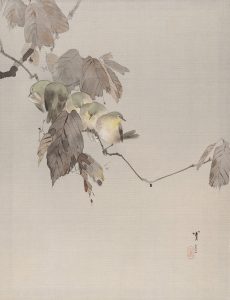
Birds on a Branch
©︎ The Metropolitan Museum of Art
Now, by examining these five birds in order, have you noticed something strange? While I really enjoyed this bunch, I couldn’t help but feel odd. I’d like you to look at the 2nd bird. Don’t you think its body from the left side (or, from this bird’s perspective, the right) is excessively wide, and its shoulders raised strangely? If you compare its size to its natural, original outline, you’ll notice how its body is 1.5 times larger than its supposed size. While the 2nd bird might have been on the larger end, its physique is abnormal.
With this, I’d like to introduce my crazy theory. I believe this enlarged right part of the body belongs to a hidden, 6th white-eye. Perhaps, unlike the other birds, only the 2nd bird might be painted soft, fluffy and with an obscured outline. Hidden entirely by the 2nd bird, this 6th bird is almost completely invisible, with its head, wings, and legs all out of sight. But just maybe with the two tail feathers that extend below the 2nd bird’s legs, perhaps the right one belongs to the 2nd, while the left one belongs to the 6th. Just maybe, like the 5th bird, this bird turned backward and shrunk a little.
To what extent may my “6th Japanese White-eye” theory be accepted? It might convince some, but others might reject it and call it a misunderstanding. If there are reasons to, both, agree and disagree, then we must have fallen into Seitei’s trap. One should never “appreciate” Seitei’s bird-and-flower paintings lightly.
Author : Masao Takahashi Ph.D. (Ornithologist)
Dr. Masao Takahashi was born 1982 in Hachinohe (Aomori prefecture) and graduated from Rikkyo University’s Graduate School of Science. Dr. Takahashi specializes in behavioral ecology and the conservation of birds that inhabit farmlands and wet grasslands. Focusing on the relation between birds and art, he has participated in various museum and gallery talks.
“Birds on a Branch” is on Exhibit at, “Watanabe Seitei Brilliant Birds, Captivating Flowers”
https://seitei2021.jp/english/
*With the recent declaration of emergency, The University Art Museum, Tokyo University of the Arts will close until May 11. For details, please see the official exhibition website.
Dates: 2021/03/27 (Sat) to 2021/05/23 (Sun) *This exhibition has ended.
Venue: The University Art Museum, Tokyo University of the Arts
https://www.geidai.ac.jp/museum/exhibit/current_exhibitions_en.htm
Address: 12-8 Ueno Park, Taito-ku, Tokyo, 110-8714
NTT Hello Dial: +81 (0)3-5777-8600
Dates: 2021/05/29 (Sat) to 2021/07/11 (Sun) *This exhibition has ended.
Venue: Okazaki Mindscape Museum,Okazaki Art Museum
https://www.city.okazaki.lg.jp/museum/guidance/p008834b.html
Address: Okazaki Central Park,1 Aza Toge, Koryujicho, Okazaki, Aichi Prefecture 444-0002
TEL: +81 (0)564-28-5000
Dates: 2021/07/17 (Sat) to 2021/08/29 (Sun) *This exhibition has ended.
Venue: Sano Art Museum
https://www.sanobi.or.jp/eng/index.html
Address: 1-43 Nakatamachi, Mishima, Shizuoka, 411-0838
TEL: +81 (0)55-975-7278
